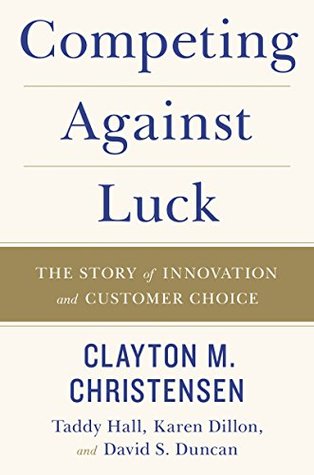More on this book
Community
Kindle Notes & Highlights
There may be an entirely new growth opportunity right...
This highlight has been truncated due to consecutive passage length restrictions.
cause your heart to beat a little faster.
behavior,
OpenTable,
“negative jobs.”
poke and prod
We’ve identified above five different fertile areas to mine for
A valuable source of jobs insights is your own life.
While most companies spend the bulk of their market research efforts trying to better understand their current customers, important insights about jobs can often be gathered by studying people who are not buying your products—or
Most companies focus disproportionately on the functional dimensions of their customers’ jobs; but you should pay equally close attention to uncovering the emotional and social dimensions, as addressing all three dimensions is critical to your solution nailing the job.
What are the important, unsatisfied jobs in your own life, and in the lives of those closest to you?
Flesh out
What’s getting in the way of these nonconsumers using your products to solve their jobs?
If a student isn’t feeling successful, for example, he could fire school and hire a gang instead.
What they hire—and equally important, what they fire—tells a story.
Pleasant Rowland
“Little Hire.”
Consequently, in order to hire your new solution, by definition customers must fire some current compensating behavior or suboptimal solution—including firing the solution of doing nothing at all.
What has to get fired
for my product to get hired?
They think about making their product more and more appealing, but not wha...
This highlight has been truncated due to consecutive passage length restrictions.
First, “habits of the present” weigh heavily on consumers.
second, the “anxiety of choosing something new.”
whiz-bang
Daniel Kahneman has
shown—the principal pull of the old is that it requires no deliberation and has some intuitive plausibility as a solution already.
Loss aversion—people’s tendency to want to avoid loss—is twice as powerful psychologically as the allure of gains, as...
This highlight has been truncated due to consecutive passage length restrictions.
trade-in
come around to
Overcoming customer anxieties is a very big deal.
It’s easy to fire things that simply offer functional solutions to a job. But when the decision involves firing something that has emotional and social dimensions to solving the job, that something is far harder to let go.
The progress customers are trying to make has to be understood in context.
The company had to start innovating—fast—or face an uncertain future.
What job were clients really hiring Mercer to do?
But there was more to their job than that.
Jobs Theory helps innovators identify the full picture of the progress a customer is trying to make in particular circumstances, including the complex set of competing needs and relative priorities.
You have to understand not only what customers want to hire, but what they’ll need to fire to make room for the new solution.
What are they really trying to accomplish and why isn’t what they’re doing now working? What is causing their desire for something new?
forty-five different emotional moments
Deeply understanding a customer’s real Job to Be Done can be challenging in practice.
Big Hire (when the customer actually buys a product)
Little Hire (when the customer actually uses it).
Before a customer hires any new product, you have to understand what he’ll need to fire in order to hire yours. Companies don’t think about this enough. Something always needs to get fired.
It is also critical to understand the forces opposing any change, including the inertia caused by current habits and the anxiety about the new.
What evidence do you have that you’ve clearly understood your customers’ jobs?
What are the forces that impede potential customers from hiring your product?
A central element of design thinking is to prioritize users’ experiences over product attributes,
New products succeed not because of the features and functionality they offer but because of the experiences
they enable.
What’s so special about an American Girl doll?


